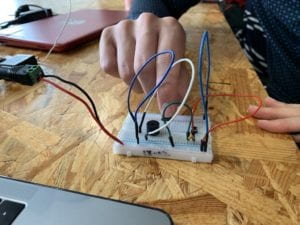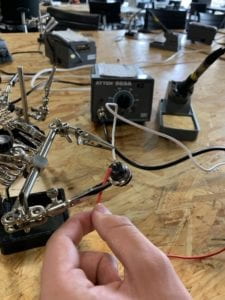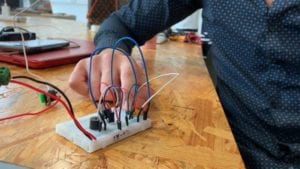READING
After reading “The Art of Interactive Design” by Crawford, it made me think a lot about interactivity and interactive media arts here at NYU Shanghai. First, I think the definition of interactivity that correlates to the Boolean property appeals to me the most since I understand the various degrees of communication equates the degree of interactivity. Since IMA is built on the foundation of being ‘interactive’, there is a great emphasis on communication and being responsive. And different degrees of interactivity can lead to vastly different outcomes.
In addition, I think I interpret the definition of UI/UX in an elevated sense since their role consists of being communicative and interacting with users to prioritize their experience. I recall in my IMA classes that I took before, we had many user testing/feedback sessions. In order to make our code the clearest and equate cohesive interactivity with the users, I received numerous critiques on my project. Reflecting on it now, it is interesting to think about how different users experience various levels of interactivity, and how that impacts their judgment of the project. Overall, interactivity is important in terms of numerous ways, not just in IMA courses, but everyday life as well. The process of refining a project to perfect interactivity is something I strive to improve on this semester.
Building Electric Circuits & Soldering Exercise
For recitation this week, my partner Rodrigo and I built electric circuits and I tried soldering for the first time.
Due to limited time, Rodrigo and I were only able to build one circuit: the doorbell. During the process, we struggled a lot since neither of us has built electric circuits before. Luckily, we had IMA learning assistants to help guide us throughout, which made the process a lot easier.
First, we took all of our materials and read over the instructions. Then, we started using the wires to start the connection between the different parts to the various charges on the breadboard. The placement on the breadboard was quite tricky since a lot of our wires intertwined and the procedure became messy. Then, we readjusted the wires and it became a lot easier to build and connect the different parts. Eventually, we finished all the steps and when we plugged in our outlet, the speaker made a buzz, which was awesome!

For our soldering workshop, we had some trouble at first since the iron we got as old and hard to use. So the metal never heated up enough for us to melt the wires to connect with the buttons and solder the parts together.

Overall, the recitation was interesting and it made me think about the reading regarding interactivity and during the workshop, it was fun to see interactivity in action. If we had more time, it would also be interesting to see the connection between the various circuits and build the other parts as well.
